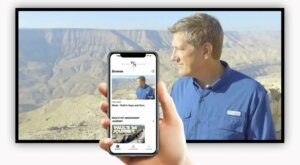A group of students used “computer vision, machine learning, and hard work” to translate a portion of a scroll from Herculaneum and win a $700,000 prize. “This is a complete gamechanger,” said one scholar.
A reservist hiking in Galilee discovered a scarab made of carnelian and dating to about 800 BC, possibly related to the Assyrian conquest.
“Egypt’s antiquities ministry said Saturday it was setting up a committee to review the restoration of Giza’s Menkaure Pyramid after a public outcry over the project.”
“Excavations have given proof of a flourishing wine industry in the Byzantine and early Arab period, especially at sites like Shivta, Halutza, Nitzana, and Avdat.”
The latest episode of This Week in the Ancient Near East looks at the use of artificial intelligence to translate Mesopotamian texts.
Bryan Windle joins John DeLancey to talk about the top 10 archaeological discoveries related to Jesus.
Now online: Deborah Hurn’s dissertation, “Identifying and Delineating the Geographic Regions of the Israelite Migration from Egypt to Canaan Using a Hydrological Approach”
Hybrid lecture on Feb 29: “A Queen, her Son, and her Chamberlain. Seal Imagery and Socio-Administrative Hierarchies at Persepolis,” by Mark Garrison
Walking The Text’s recommended resource of the month is The Essential Archaeological Guide to Bible Lands, by Titus Kennedy.
Appian Media has released a trailer for “Out of Egypt.”
Abigail Leavitt shares some photos from her recent explorations in Jerusalem.
HT: Agade, Gordon Dickson, Arne Halbakken, Ted Weis

